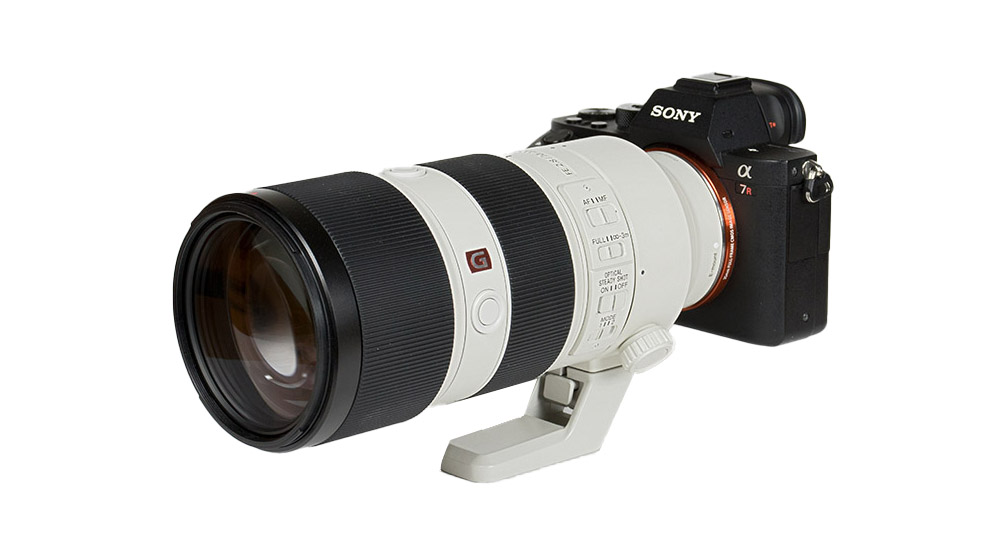
One of the core components of a professional grade system is a fast medium tele-zoom lens – such as the
Sony FE 70-200mm f/2.8 GM OSS. Combined with the other recently released lenses and cameras,
Sony can finally and truly compete with CaNikon in the high-class segment. Needless to say but that comes
literally at a price – in this case, 2600EUR/USD. This is quite a bit more expensive than the comparable
Canon EF 70-200mm f/2.8 USM L IS II but actually a little cheaper than the Nikkor AF-S 70-200mm f/2.8E FL ED.
Yes, lens prices have inflated quite a bit lately …
The Sony FE 70-200mm f/2.8 GM OSS has about the size and weight of these DSLR counterparts which, in turn,
means that it is looking rather huge when mounted to a tiny Sony camera. Of course, that’s no major surprise in this case
because the focal length and aperture dictate the front diameter and, to some degree, the length of the lens.
However, it is certainly a departure from the original mirrorless concept as a smaller and more light-weight alternative to DSLRs.
That being said there is nothing wrong with this per se because mirrorless cameras have their
own advantages such as a more precise light metering, higher focus accuracy and a viewfinder image that
actually reflects the final result (mostly). Even so, we would recommend adding a vertical grip to the camera for a better balance.
The build quality of the lens is certainly outstanding. The lens is tightly assembled and mostly made of metal parts.
The two rubberized focus rings turn smoothly. It is also – of course – weather-sealed.
Typical for its class it does not extend when zooming/focusing. A rotatable and detachable tripod mount is also included as is a deep petal-shaped lens hood.
The hood does also feature a retractable window for accessing filters – nice. Focus-hold buttons are also placed between the focus and zoom rings.

In the introduction, we mentioned that mirrorless cameras have advantages in terms of focus accuracy. This remains true here as well.
However, at least on our test camera, the A7R II (admittedly not the newest model) the AF speed remains quite a bit short
of the best DSLR options. Even worse is the fact that the lens did refuse to focus in certain close-focus scenes – albeit rarely.
We haven’t seen this with other Sony FE lenses so far and hopefully, Sony will fix this soon via a firmware update.
Manual focusing works “by wire” thus by driving the AF motor. However, you will barely notice a difference compared
to conventional manual focusing.
The image stabilizer (OSS) features two settings – one for full image correction and one of panning (horizontal object tracking).
Sony doesn’t provide any figures regarding its efficiency but we’d rate it around the 3 f-stop mark – your mileage may vary, of course.
| Specifications | |
|---|---|
| Optical construction | 23/ 18 inc. 1xXA, 2x aspherical, 2xSuper ED & 4xED elements |
| Number of aperture blades | 11 (circular) |
| min. focus distance | 0.96m (1:4 magnification) |
| Dimensions | 88x200mm |
| Weight | 1480g |
| Filter size | 77mm |
| Hood | supplied, petal-shaped, bayonet mount |
| Other features | Weather sealing, Image Stabilizer, Focus stop buttons, Nano AR coating |
Distortion
Most users are probably preferring to keep image auto-correction activated all the time.
In this case, distortions are not an issue throughout the zoom range as seen below.
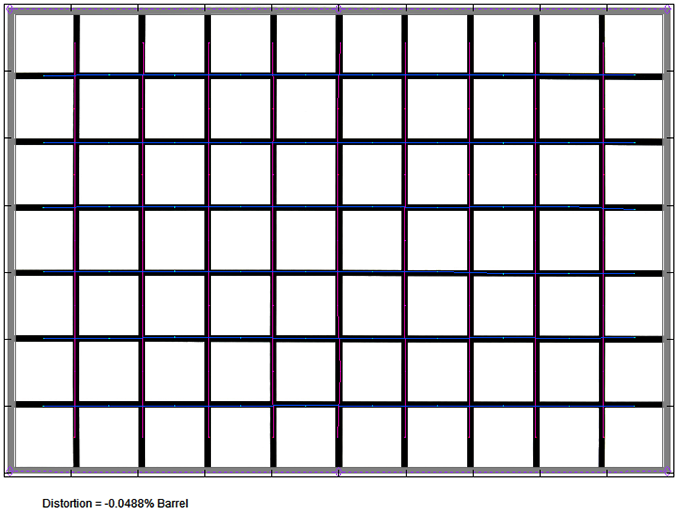
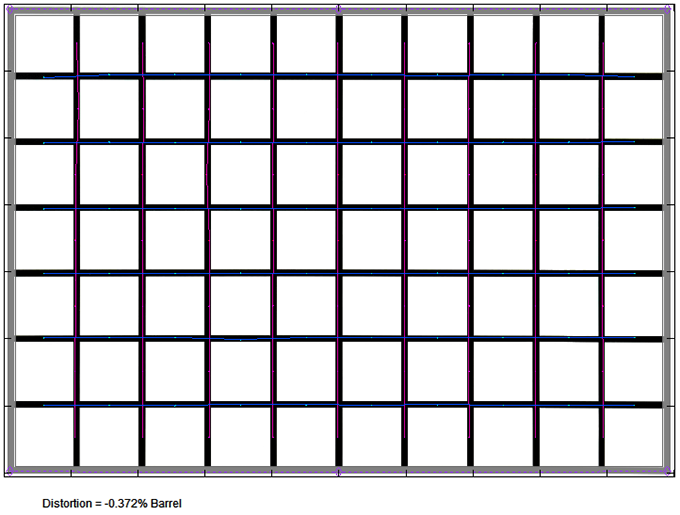
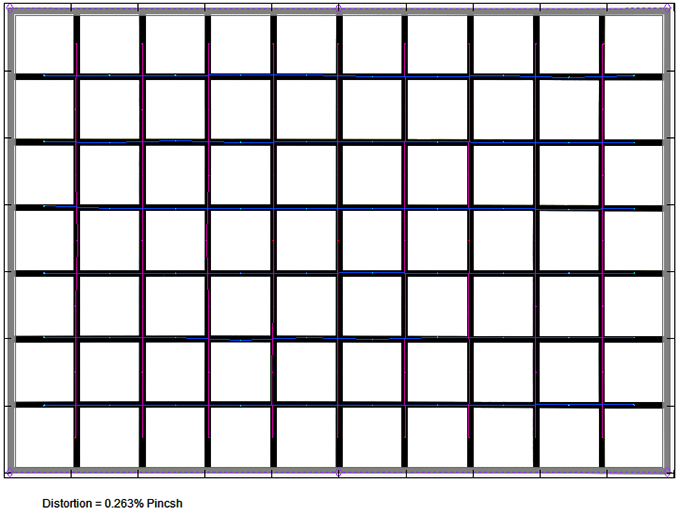
When looking at the RAW characteristic, the situation is a little different albeit far from being dramatic.
At 70mm, the lens produces a medium degree barrel distortion (2%). There are barely any distortions in the middle range but
pincushion distortions up to 1.7% show up towards the long end.
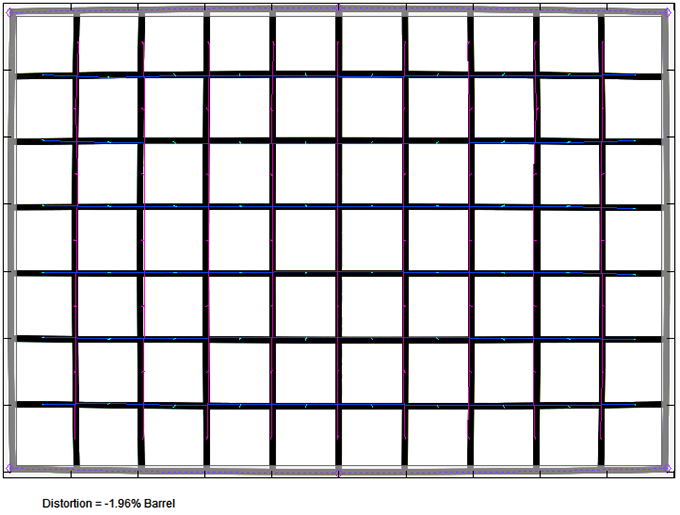
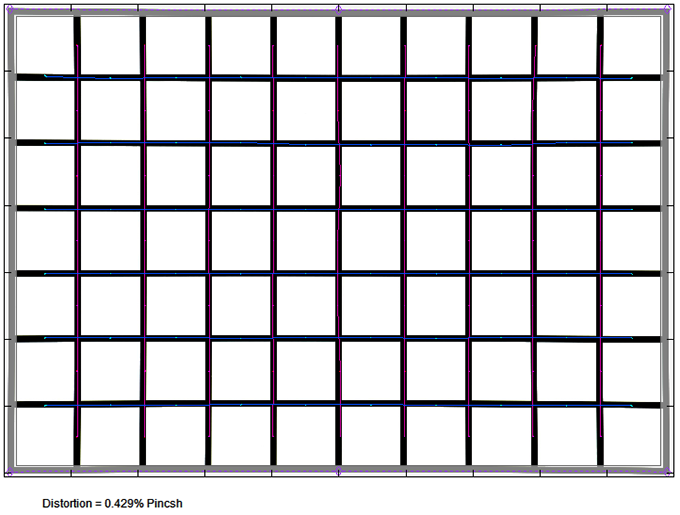
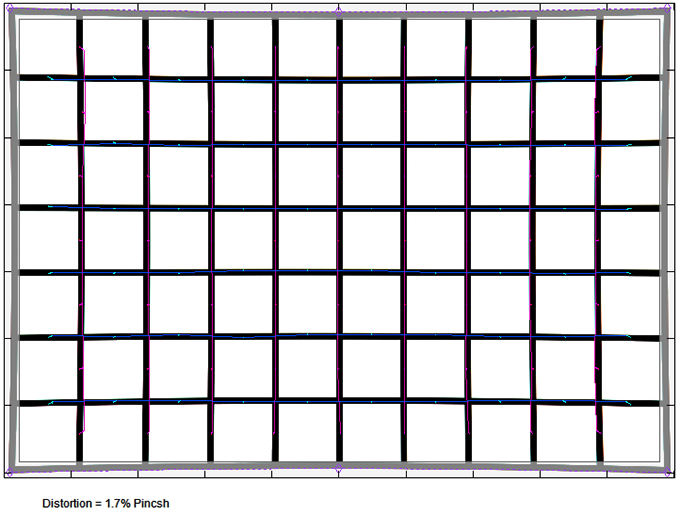
Vignetting
Vignetting can also be auto-corrected (at the price of increased corner noise). In this case and at f/2.8, light falloff is still somewhat visible at around 0.8EV (f-stop).
Stopping down reduces the issue slightly.
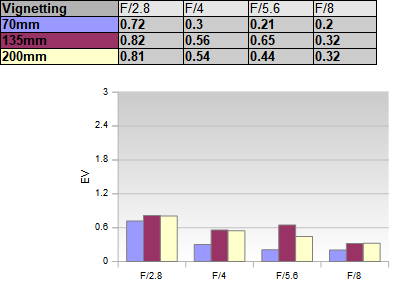
If you disable both distortion and vignetting correction, things are different here though. The vignetting is still fairly moderate at 70mm f/2.8 and a non-issue from f/4 here.
However, at 135mm and 200mm @ f/2.8 the light falloff is much more obvious at 2-2.2EV (f-stops). As usual, stopping down to f/4 reduces the vignetting substantially albeit some traces remain even at f/5.6.
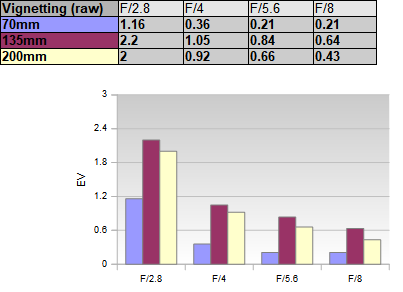
MTF (resolution)
We are performing our tests at 42mp and keeping this in mind, the available resolution of the Sony FE 70-200mm f/2.8 GM OSS is impressive. At 70mm the broader center-zone is excellent straight from f/2.8. The borders are very good (just). The corners are just slightly soft at fully open aperture but recover nicely at f/4 already. At 135mm the quality is a bit more even with no weakness of the corners at f/2.8. The center-zone is still tack-sharp at 200mm – surprisingly even a bit better than at 135mm – albeit the quality of the outer image region tanks a little. At f/2.8 the borders are still good whereas the corners are just fair here. Stopping down to medium aperture settings, the corner quality increases to good levels. As usual diffraction effects start having some higher impact from f/11 onward.
The centering quality of the tested sample was Okay albeit not perfect.
Please note that the MTF results are not directly comparable across the different systems!
Below is a simplified summary of the formal findings. The chart shows line widths per picture height (LW/PH) which can be taken as a measure of sharpness. If you want to know more about the MTF50 figures you may check out the corresponding Imatest Explanations.
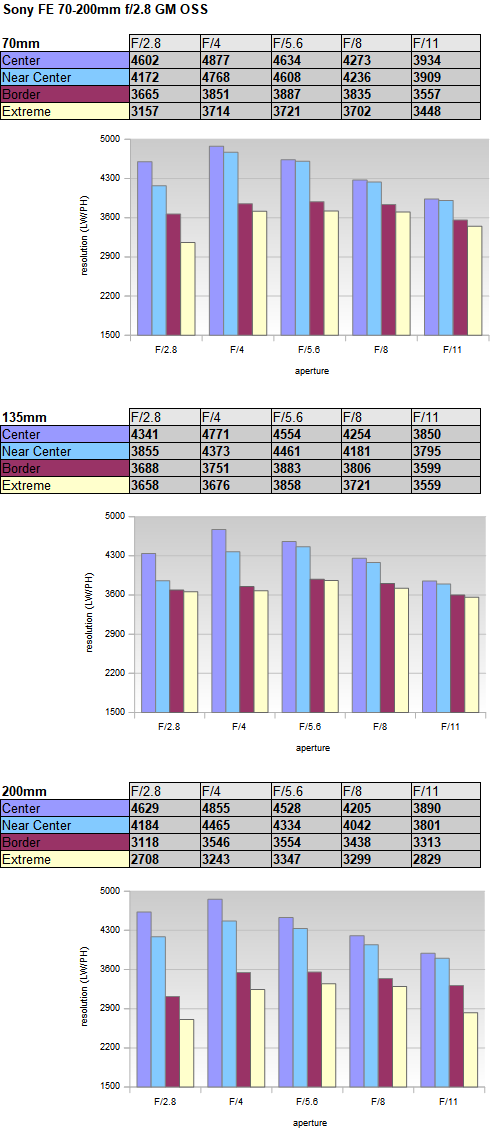
Chromatic Aberrations (CAs)
The amount of lateral chromatic aberrations (color shadows at the image borders) is pretty good. The CAs remain below 1px on the average at the image borders in the low to mid range – this is rather negligible. The CAs increase slightly at 200mm but they remain unobtrusive at around 1.3px.

Bokeh
Its ability to produce a shallow depth-of-field is a primary selling point of the Sony FE 70-200mm f/2.8 GM OSS. Producing blur is one thing, a good bokeh is another one. However, the Sony lens is showing good skills here.
Out of focus highlights have a perfectly circular shape at f/2.8 and the lens manages to maintain this till f/8. This is unusual and does probably relate to the 11 aperture blades that Sony incorporated. The inner disc zone is fairly clean. On the downside, there’s some outlining that is getting emphasized when stopping down.
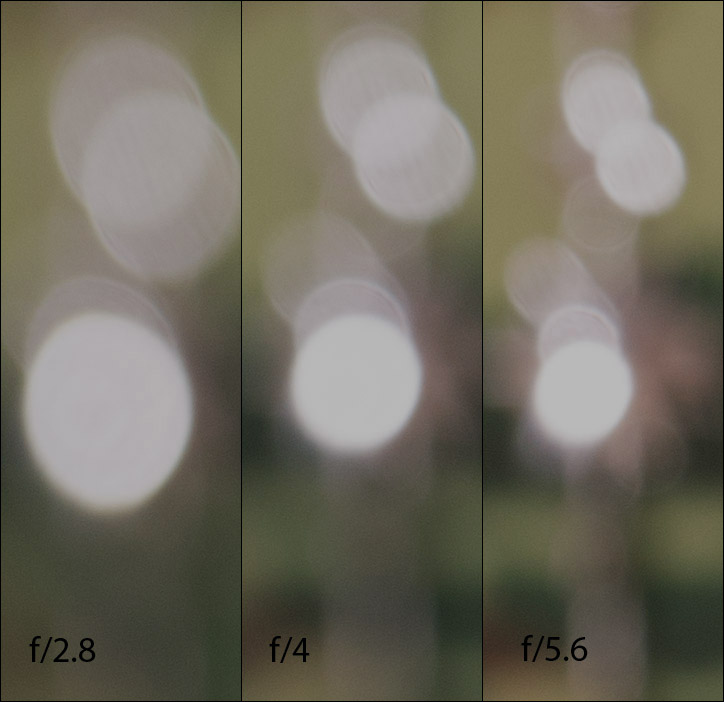
Near the borders, the circular discs deteriorate to “cat eyes” as you can see below. This is nothing unusual – it’s a vignetting effect – and it can be reduced by stopping down.
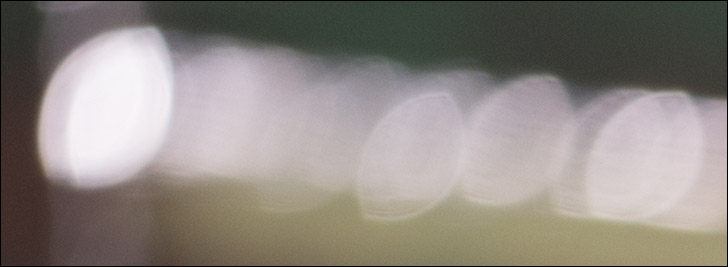
As far as the general background and foreground blur is concerned, it is quite smooth with only minor imperfections at harsher contrast transitions. The best prime lenses may be silkier still but for a zoom lens, the quality is up there with the best in its class.
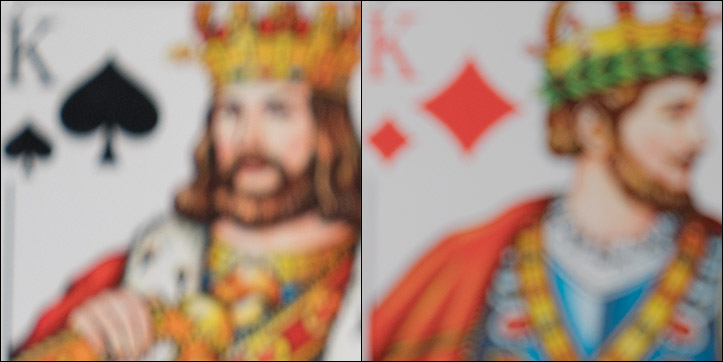
Bokeh Fringing
In a perfect world scenario, you won’t see any axial CAs thus color fringing on the Z-axis. However, only a handful of fast lenses are correcting the issue effectively. The Sony FE 70-200mm f/2.8 GM OSS is roughly in line with other lenses in this class. Thus at f/2.8, it shows purplish halos in front the of focus point and some greenish halos beyond. At f/4, the issue is reduced and negligible beyond.
You should also be able to notice that the focus point does NOT shift when stopping down. Many high-speed lenses have difficulties keeping the focus point spot on – focus-shifts or so-called Residual Spherical Aberrations (RSA).
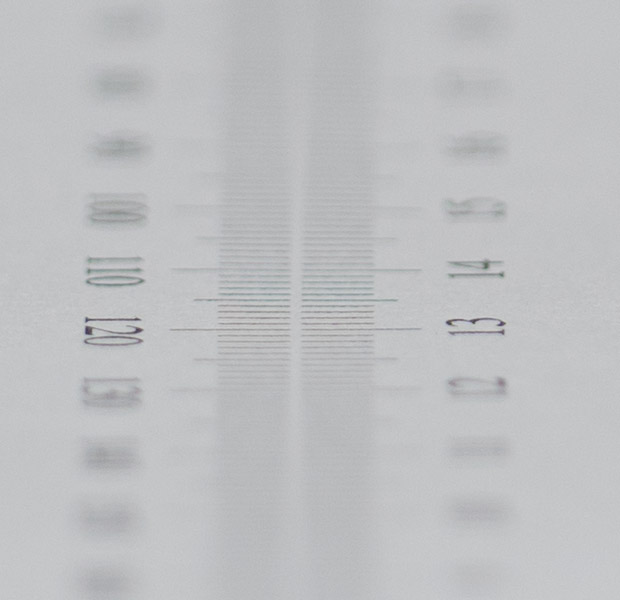
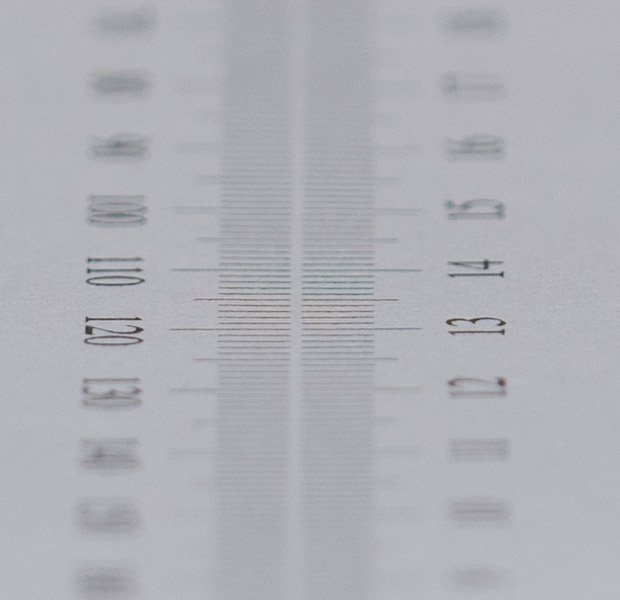
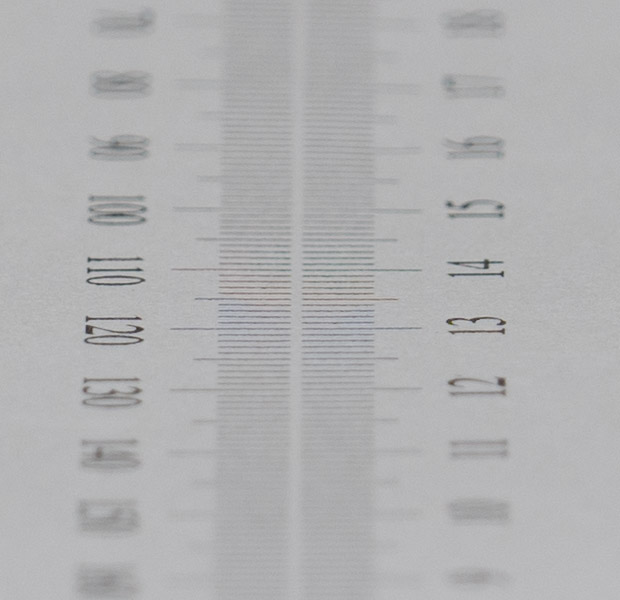
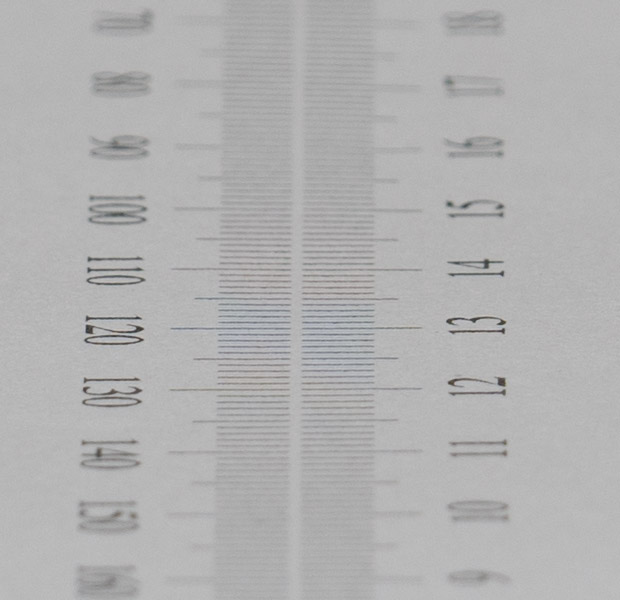
Sample Images
Competition
There aren’t any third-party alternatives to the Sony FE 70-200mm f/2.8 GM OSS (shown in the center below) yet. If you don’t really require a fast aperture, there’s the Sony FE 70-200mm f/4 G OSS (to the left) and Sony FE 70-300mm f/4.5-5.6 G OSS (to the right). The Sony FE 70-200mm f/4 G OSS punches in the same quality class at half the price … which may be worth a thought or two. It’s also more compact. The latter applies to the FE 70-300mm f/4.5-5.6 G OSS but its quality isn’t quite up there.
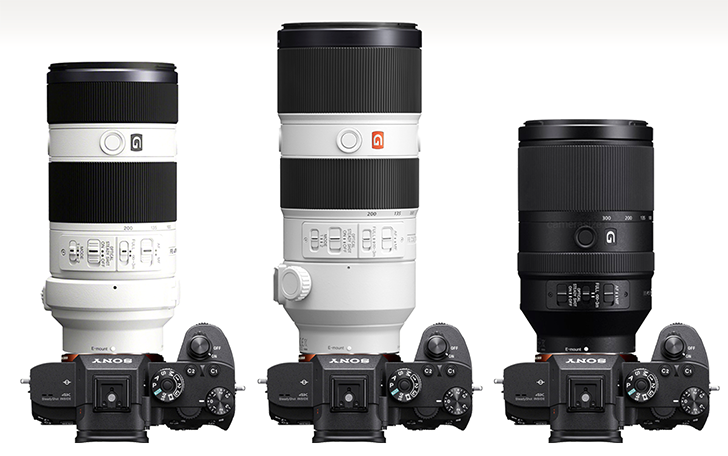
Visual comparison courtesy of camerasize.com.
The Sony FE 70-200mm f/2.8 GM OSS is an impressive piece of equipment. The broader center-zone is especially outstanding when keeping in mind that the lens has been tested on a 42mp sensor. The far corners could be better at 70mm f/2.8 and 200mm f/2.8 but that's usually not an issue in real life. Lateral CAs are low. Image distortions as well as vignetting are well auto-corrected. The native distortion characteristic is somewhat worse compared to what we've seen with similar DSLR lenses though. The quality of the bokeh is pretty nice for a lens in this class. The amount of bokeh fringing is about average.
The build quality is perfectly aligned to professional standards. It feels super-sturdy and the weather sealing certainly helps when the going gets tough outdoors. Sony also paid attention to details such as a retractable window in the lens hood for using a polarizer and a bunch of focus stop buttons. The built-in image stabilizer is good enough for about 3 f-stops. If there's one aspect that didn't really convince us, it's the auto-focus. Things may be different on the A9 but on the A7R II, the speed wasn't all that great (compared to DSLR lenses) and we even experienced a few bugs which we haven't seen in other Sony lenses so far.
If you want to achieve shallow depth-of-field with a zoom lens, the Sony FE 70-200mm f/2.8 GM OSS is certainly a go-to lens in the Sony system - albeit a pricey one.
PS: Some readers may be stressed by our optical rating. Please keep in mind that our rating system is absolute and not relative to the class of the lens. Also - the rating is aligned to a 42mp sensor. On a 24mp sensor, the rating would be easily 4* or better because the (few) corner weaknesses would not show up quite as much.
-
Optical Quality
-
Build Quality
-
Price / Performance

